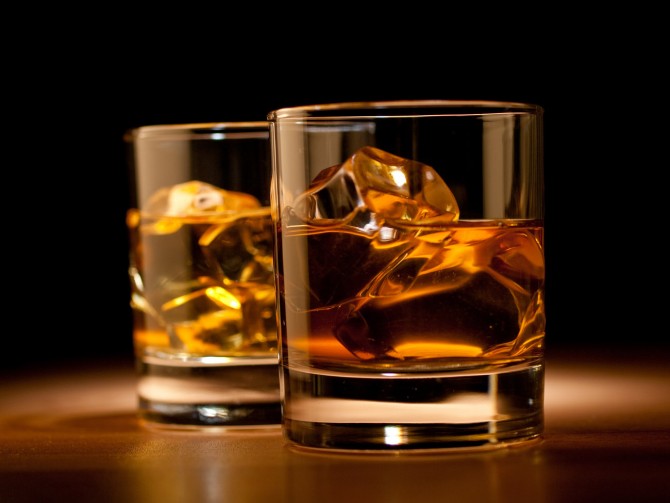
The experiment is being carried out by Scottish whisky giant Ardbeg, in conjunction with the Houston-based company NanoRacks LLC. NanoRacks are a commercial organisation focused on transporting payloads into, and utilising the benefits of, low-earth orbit for research purposes. They have placed 30 small satellites into low-earth orbit as of March 2014, and already have contracts for 50 more and memorandums of understanding for a further 100. Between 60 and 80 satellites are planned to be deployed in 2014, the largest of which is 53 kilograms. According to Ardbeg, this one-of-a-kind hooch has been orbiting the planet 15 times a day on the International Space Station (ISS) at 17,227 miles per hour. NanoRacks had flown seventy payloads to the ISS as of February 2013 and has since been contracted for another eighty.
Ardbeg’s aim is to examine the differences in the whisky maturation process when comparing the earth’s normal gravity with that of the micro-gravity the vials experienced. Twenty four vials containing 6 ml (millilitres) of their whisky and some charred oak have been orbiting earth in the International Space Station since September 2011 after being launched from Baikonur in Kazakhstan, in a Soyuz rocket. A control identical to its astronautical brethren has been kept in the Ardbeg’s distillery on Islay. The two sets of samples are planned to be brought to laboratories in Houston, Texas, for examination.
Not to miss out on the unique marketing, Ardbeg’s director of distilling and whisky creation, Dr. Bill Lumsden, was quick to point out that “this is one small step for man but one giant leap for whisky.” Buzz Lightyear even got a reference. “We hope to shine new light on the effect of gravity on the maturation process but who knows where it will lead us? It could be to infinity and beyond.” Though overall, Dr. Lumsden seems optimistic with the direction this experiment could take. “The team hope to uncover how flavours develop in different gravitational conditions – findings which could revolutionise the whisky-making process.”
While Ardbeg may lay the claim to the only booze distilled on a space station, it is not the only unusual alcohol to make the news in recent months. Back in June, a stoneware bottle dating from between 1806 and 1830 was discovered on the F-53-31 shipwreck, also known as the Glazik, in the Gdańsk Bay off the coast of Poland. Originally designed to contain the famous “Selters” water, the sealed flask was tested to see if any remained. Through preliminary experiments, the researchers discovered that the bottle instead contained a 14% alcohol distillate, which they believe to be either gin or vodka that has been diluted with water.
The 30cm bottle is believed to have been manufactured in Ranschbach, Germany, which is around twenty-five miles away from the Selters water springs. Discovered one thousand years ago in the Taunus Mountain region in Germany, Selters has been supplying high-quality carbonated water which is often referred to as “fluid treasure.” Selters is one of the oldest types of mineral water to be found in Europe, and it has been claimed that even just a few sips of the liquid can have many health benefits and boost strength.
The search of the wreck was led by Tomasz Berdnarz, an underwater archaeologist employed by the National Maritime Museum. According to Berdnarz, this 200-year-old liquor is still drinkable. As he told the Ministry of Science and Science Education of Poland, “This means it would not cause poisoning. Apparently, however, it doesn’t smell particularly good.”At the beginning of July, the two-century-old bottle and alcohol were sent to the J.S. Hamilton chemical laboratory in Gdynia for further testing, with the results expected shortly.
Similar caches are uncovered from time to time, such as eighteen sealed bottles of 282-year-old, 145 proof Royal British Navy ration rum, which were each appraised to be worth roughly $20,000 (€15,485 approx.) by Sotheby’s of New York. While exploring a Spanish colonial wreck which sank off the coast of Florida in 1733, Dale Clifton, now of DiscoverSea Shipwreck Museum in Delaware, found a crate of thirty bottles of the rum, eighteen of which were drinkable.
Sadly, the space whisky won’t be available for commercial use just yet. You will just have to make do with boring terrestrial whisky for now.






